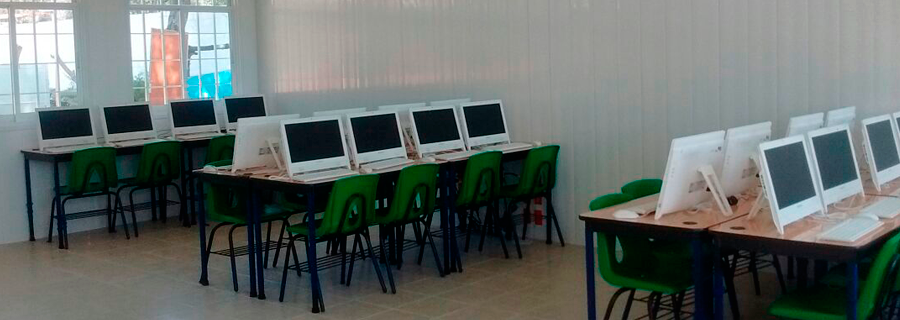As we have already reviewed in previous articles, the educational infrastructure has a central effect on the learning process of the students.
Organizations such as the United Nations Children's Fund and the Inter-American Development Bank (IDB) have agreed that:
"... The school infrastructure, among other factors, facilitates the learning processes, if they are considered elements such as recreation areas, open spaces for individual and group activities, conservation of the environment, as well as classrooms Flexible Multi-purpose "...
In this way, InTempo in conjunction with the "schools to a Hundred" program, ensure that school facilities in the public system have dignified spaces, where children and young people feel comfortable and perceive the value of the training they receive.

Otro de su principal objetivo es disminuir el rezago en las condiciones físicas de las escuelas públicas de educación básica ofreciendo:
1. Existence of educational spaces
A greater endowment of this type of areas offers the possibility of an offer Differentiated from learning activities to students. It can also facilitate the work of the teaching group.
2. Conditions of construction of educational spaces.
A basic function of the educational spaces is to offer conditions that guarantee the protection and safety of the people and the goods of the school.
Furthermore, the construction characteristics of the educational areas must ensure dignified, comfortable and safe environments for the development of school activities.
3. Health infrastructure of schools
The existence and status of health care facilities for children and teachers are by themselves a condition of hygiene and health.
This section addresses, in the first instance, the existence of toilets, as well as drinking troughs in the schools, considering that it would be desirable that the educational facilities will have this sanitary infrastructure.
Second, it identifies whether schools ' restrooms are suitable for children's height.
And in third and last place it is sought that the spaces integrate a universal architecture, so that the displacement and accessibility to all the sectors of the population are possible.




